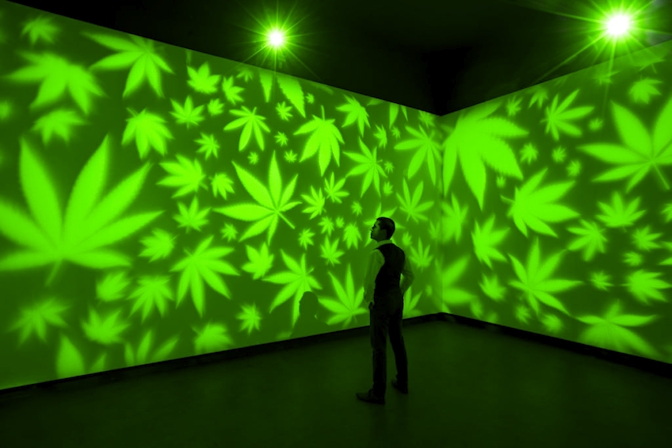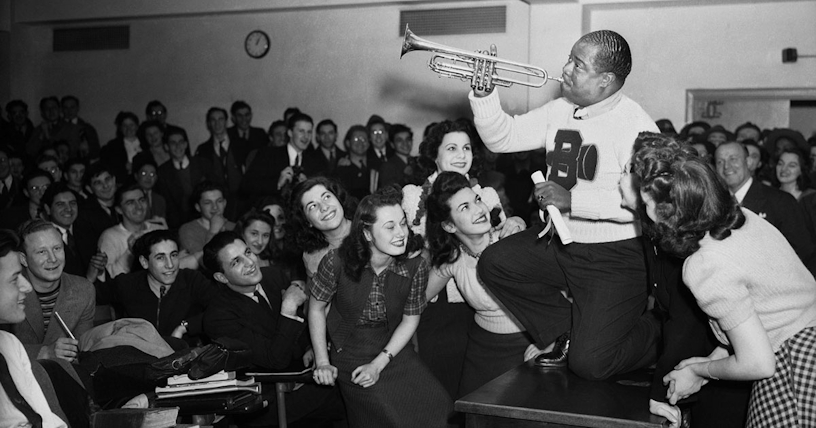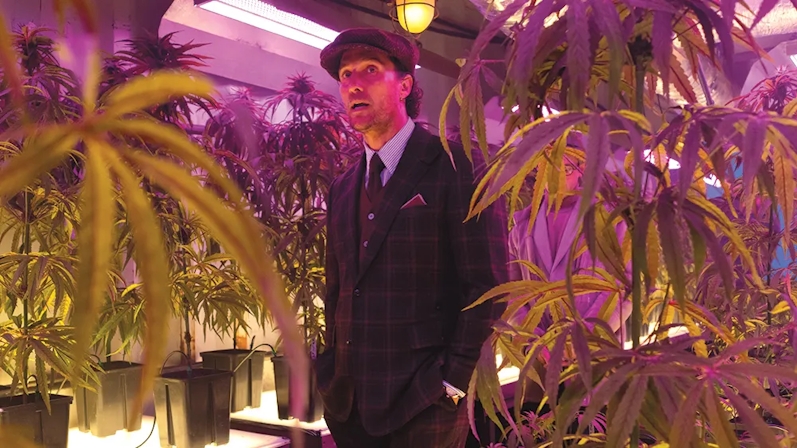
How Cannabis Influences Art, Music, Fashion, And Film
Cannabis, a plant steeped in history and controversy, has long transcended its botanical identity, weaving its way into the very fabric of cultural expression and creativity.
This enigmatic herb has become a muse in the art world, a rhythm in the beats of music, and a trendsetter in the dynamic arena of fashion.
As we embark on this journey, we delve into a narrative where cannabis is not just a substance but a source of inspiration, a symbol of rebellion, and a statement of identity.
In the realm of art, it has been the silent companion of artists, guiding them through the mazes of imagination. In music, it has resonated with the chords of change, echoing in genres that have defined generations.
In fashion, it has emerged as an icon of style, challenging norms and embracing sustainability. This exploration is an invitation to unravel the rich and intricate tapestry of cannabis’s influence, revealing how it has shaped, and been shaped by, the worlds of art, music, and fashion.
Join us as we trace the green thread that runs through these domains, painting a picture of a plant that is much more than its leaves and flowers.
Cannabis In Art

The intertwining of cannabis and the visual arts is a tale of color, creativity, and controversy. For centuries, artists have turned to cannabis as a source of inspiration, seeking its mind-opening properties to unlock new realms of creativity.
The presence of cannabis in the art world is not just about its effects on the artist’s mind but also about its role as a powerful symbol in their work.
Historically, cannabis has been depicted in art as a mystical and sacred plant, revered in various cultures for its spiritual significance. In more recent times, however, cannabis has taken on new meanings.
It has become a symbol of political statements, social commentary, and personal expression. Contemporary artists use cannabis as a subject to explore themes ranging from freedom and liberation to social justice and the human relationship with nature.
The modern art scene has seen a surge in cannabis-themed exhibitions and art pieces, reflecting the plant’s growing acceptance and intrigue. These works often challenge the viewer’s perceptions and spark dialogues about the plant’s place in society.
From hyper-realistic paintings and sculptures to abstract and conceptual art, cannabis has become a versatile and provocative theme in the art world.
In addition to serving as inspiration and subject matter, cannabis has influenced artistic styles and movements. The psychedelic art of the 1960s and 1970s, for instance, with its vibrant colors and surreal imagery, is often associated with the cannabis and counterculture movements of the time.
This era showcased how cannabis could influence not only the content of art but also its form, leading to new ways of visual expression and perception.
Moreover, cannabis has also found its place in the digital art world, with artists using technology to create cannabis-inspired art pieces that are as innovative as they are visually stunning.
From digital illustrations to immersive installations, cannabis continues to fuel artistic innovation in the digital age.
Cannabis In Music

The bond between cannabis and music is a melodious and historic one, resonating through time and genres. From the smoky jazz clubs of the early 20th century to the reggae rhythms echoing the Rastafarian culture, and into the heart of the modern hip-hop scene, cannabis has been a constant companion and muse to musicians.
In jazz, legends like Louis Armstrong and Billie Holiday often celebrated cannabis as a source of inspiration and an escape from the rigors of life. It was more than a recreational habit; it was a catalyst for creativity, helping musicians break free from conventional structures to explore new, improvisational forms of expression. Cannabis became synonymous with the jazz scene, influencing not just the musicians but the very essence of the music they created.
The story of cannabis in music took a profound turn with the emergence of reggae in Jamaica. Rooted in the Rastafarian belief system, cannabis, or ‘ganja’ as it is commonly known, was revered as a sacred herb.
It was seen as a tool for spiritual awakening and social resistance. Iconic musicians like Bob Marley used their music to express not just their art but also their advocacy for cannabis, intertwining their political messages with the plant’s symbolism.
In more recent decades, the relationship between cannabis and music has evolved yet again, particularly in the realm of hip-hop and rap. Cannabis imagery in these genres is often a symbol of defiance, resistance, and commentary on social and racial issues.
Artists like Snoop Dogg and Cypress Hill have become as famous for their association with cannabis as they are for their music, using their platform to advocate for legalization and to break down the stigma surrounding the plant.
Cannabis has also influenced music festivals and live performances, where it’s often part of the communal experience. These events are not just about enjoying music but also about celebrating a shared culture that often includes cannabis. This communal aspect of cannabis in music has helped foster a sense of unity and belonging among fans.
Moreover, the influence of cannabis in music extends beyond the lyrical and thematic content. It has shaped the production and sound design elements of music, inspiring artists to experiment with new sounds and production techniques.
Cannabis Chic: Impact On Fashion

The influence of cannabis on the fashion industry is a vivid illustration of how a once-stigmatized plant has blossomed into a symbol of style, innovation, and sustainability. From the runways of high fashion to streetwear and eco-conscious brands, cannabis has emerged as both a muse and a material, weaving its way into the fabric of fashion culture.
In the realms of high fashion and designer wear, cannabis motifs have begun to appear more frequently, symbolizing a blend of edginess and social commentary. Designers are incorporating cannabis leaves and imagery into their designs, using them as bold statements that speak to a broader cultural shift towards acceptance and normalization. These motifs are often seen as symbols of rebellion against conventional norms, challenging the status quo and offering a new perspective on what fashion can represent.
Streetwear, known for its connection to youth culture and its tendency to reflect societal trends, has also embraced cannabis. Clothing and accessory lines featuring cannabis-inspired designs have become increasingly popular, often serving as a form of self-expression for wearers who align with the cannabis culture. These designs range from subtle references to overt displays, catering to a diverse audience that sees fashion as an extension of their identity and beliefs.
Beyond aesthetics, the fashion industry’s relationship with cannabis extends to sustainability through the use of hemp, a variety of the Cannabis sativa plant. Hemp has become a favored material in eco-friendly fashion due to its durability, versatility, and minimal environmental impact.
It requires significantly less water and pesticides than traditional cotton and yields a fiber that is strong, breathable, and biodegradable. Fashion brands focusing on sustainability are turning to hemp as a key material in their collections, showcasing how cannabis can contribute to an environmentally conscious approach to fashion.
The impact of cannabis on fashion also reflects a broader conversation about the plant’s role in society. As designers and brands integrate cannabis into their work, they help shift public perceptions, making it more acceptable and mainstream.
This change is not just about embracing cannabis in a literal sense but also about what it represents: a shift towards more open, diverse, and sustainable practices in fashion.
Influence In Film And Cinema

The portrayal of cannabis in film and cinema has been a journey of evolution, reflection, and, at times, revolution. From its early depictions in counterculture classics to its more nuanced representation in modern cinema, cannabis has played a significant role in shaping film narratives and character development.
In the early days of cinema, cannabis was often portrayed negatively, reflective of the societal attitudes of the times. Films like “Reefer Madness” (1936) depicted cannabis use in a highly sensationalized manner, contributing to the stigma and misconceptions surrounding the plant. These portrayals were often used as cautionary tales, warning audiences of the perceived dangers of cannabis use.
However, as societal attitudes towards cannabis began to shift, so did its portrayal in film. The 1960s and 1970s saw the emergence of counterculture films where cannabis was depicted as a symbol of rebellion, freedom, and non-conformity.
Movies like “Easy Rider” (1969) and “Up in Smoke” (1978) not only embraced cannabis use but also celebrated it, reflecting the changing perceptions of the era. These films played a pivotal role in normalizing cannabis, presenting it as a regular part of the characters’ lives and a catalyst for adventure and self-discovery.
In contemporary cinema, the portrayal of cannabis is more varied and complex. While stoner comedies like “Pineapple Express” (2008) continue to entertain audiences with humorous takes on cannabis culture, other films have explored more serious themes.
Independent and mainstream movies alike have begun to use cannabis as a narrative device to address broader issues such as medicinal use, legal battles, and social justice.
Films like “Half Baked” (1998) and “The Big Lebowski” (1998) have achieved cult status, resonating with audiences for their comedic yet authentic representation of cannabis culture.
Furthermore, documentaries and docudramas have emerged as powerful mediums for discussing the realities of cannabis. These films often delve into the legal, medical, and social aspects of cannabis, providing a platform for education and advocacy.
They challenge the audience to reconsider their views on cannabis, often shedding light on the plant’s medicinal properties, the complexities of legalization, and the impact of the war on drugs.
Takeaway
From the canvas to the catwalk, from soulful melodies to the silver screen, cannabis has woven its narrative deeply into the cultural fabric. Its journey through the domains of art, music, fashion, and film reveals a rich tapestry of influence and inspiration.
In each of these realms, cannabis has acted as a muse, a symbol, and a catalyst for creativity and change. As society continues to evolve in its understanding and acceptance of this versatile plant, the realms of creativity and culture are sure to reflect and embrace these changes.
The story of cannabis in the arts is far from complete; it is an ever-evolving saga that promises to inspire new expressions, challenge conventions, and celebrate the plant’s enduring impact on human creativity.
Herb Recommended Products:
READ MORE










